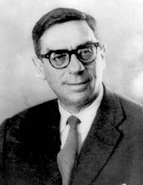

Although not strictly a historian, it is undeniable that, both due to the period in which his education took place and the special attention he always paid to the mutual conditioning of synchrony and diachrony, history features prominently in various aspects of Nemésio’s highly diverse body of work in terms of genres and themes. One of the most evident examples is the segment of biographies of historical figures, the first of which, Isabel de Aragão, Rainha Santa [Isabel of Aragon, the Holy Queen], was published in 1936 and translated into Spanish in 1944. As the author wrote in a letter to Adolfo Casais Monteiro (8 April 1936): " At times, I feel like a biographer, at others, a novelist, or a poet, and I am even a professor and philologist!" This statement encapsulates the hybridity present in this and other works. Equipped with a small bibliography and an appendix of "Documents" taken from the work of António Ribeiro de Vasconcelos—"my teacher of auxiliary sciences of History at the Faculty of Arts of the University of Coimbra [...] whose rare erudition and exemplary criticism made possible a certain tone of intimacy between the biographer and a figure from such a distant past " —the work clarifies the author’s approach in a note: " This little book is a 'life,' that is, a purely biographical interpretation of the Queen [...] we have not lost our historical footing; we have not invented a single character or event: our invention is purely psychological. A 'life' cannot be written solely with scattered records from archives ." (p. 104). In Vida e obra do Infante D. Henrique [Life and Work of Prince Henry the Navigator] (1959), Nemésio states: " This little book remains within the natural limits of simple narrative [...] it did not require a scholarly or bibliographic apparatus. The primary sources, especially the chronicles, were consulted [...] but detailed documentation or a discussion of interpretive positions would only burden the text and hinder readability ." (p. IV). In fact, he promises to revisit the subject in another study, more in line with his relationship with History: " In a framework of cultural history directly investigated through the literary texts and documentary sources of the 15th century. There, we will analyse the stratification of classes, ideals of life, the mental structure of the time, and its content ." (p. VI). This perspective aligns with what Nemésio considered the decisive impetus during his time at Coimbra: the search for a " comprehensive history of the world, speculatively invited to analyse the distinctions and ambiguities between nature and culture, necessity and freedom, man and the world—in sum, the 'historical reason' that Dilthey and Ortega y Gasset would later articulate for me " ( Última Lição [Last Lesson], p. XXVI). However, it does not align with " some operations of microhistory I have conducted in my studies " (ibid., p.
This work is financed by national funds through FCT - Foundation for Science and Technology, I.P, in the scope of the projects UIDB/04311/2020 and UIDP/04311/2020.
